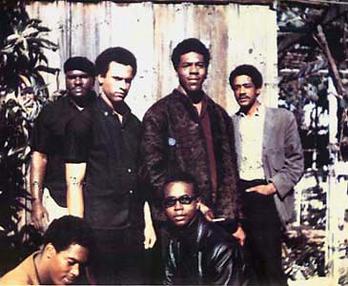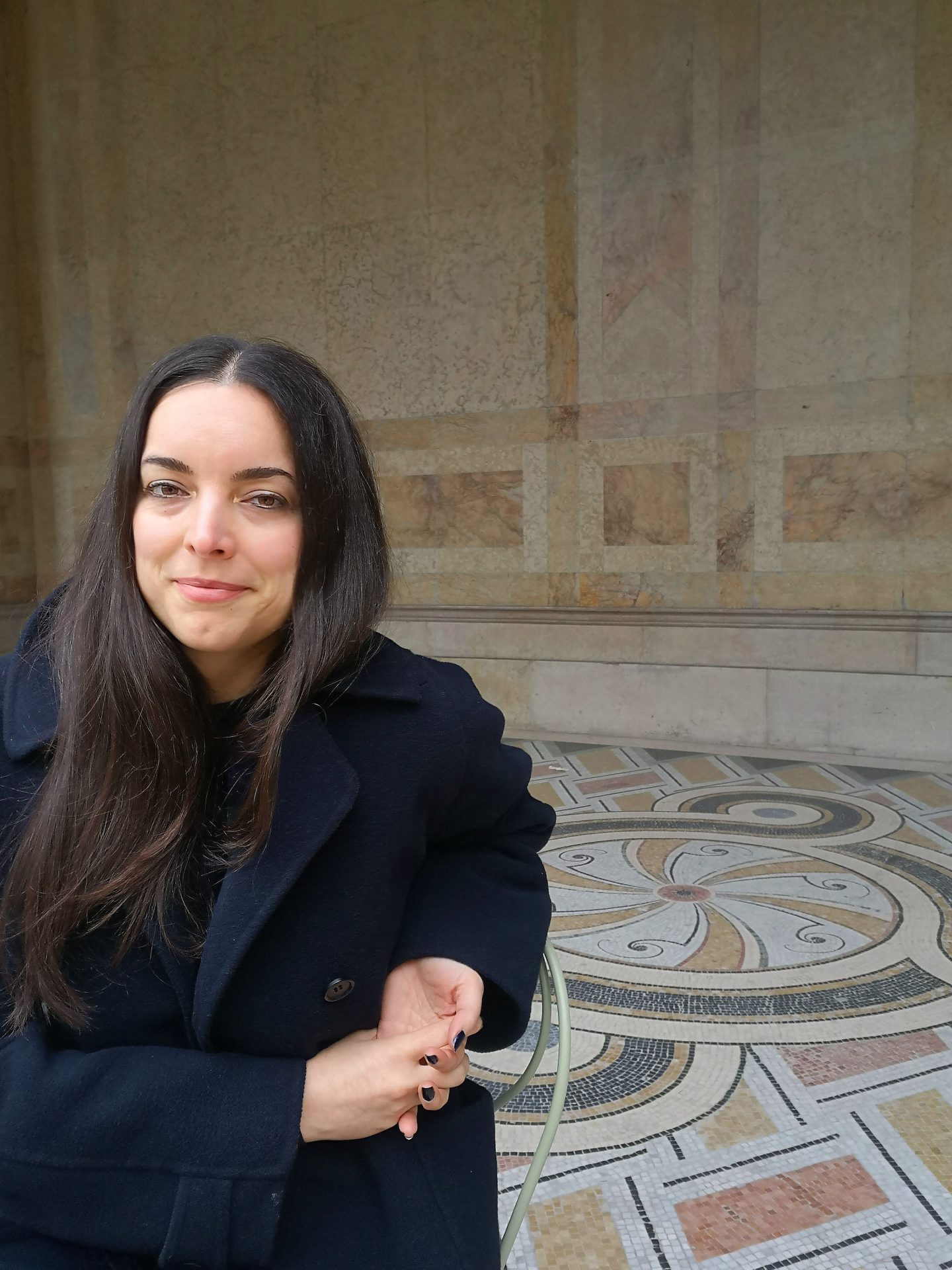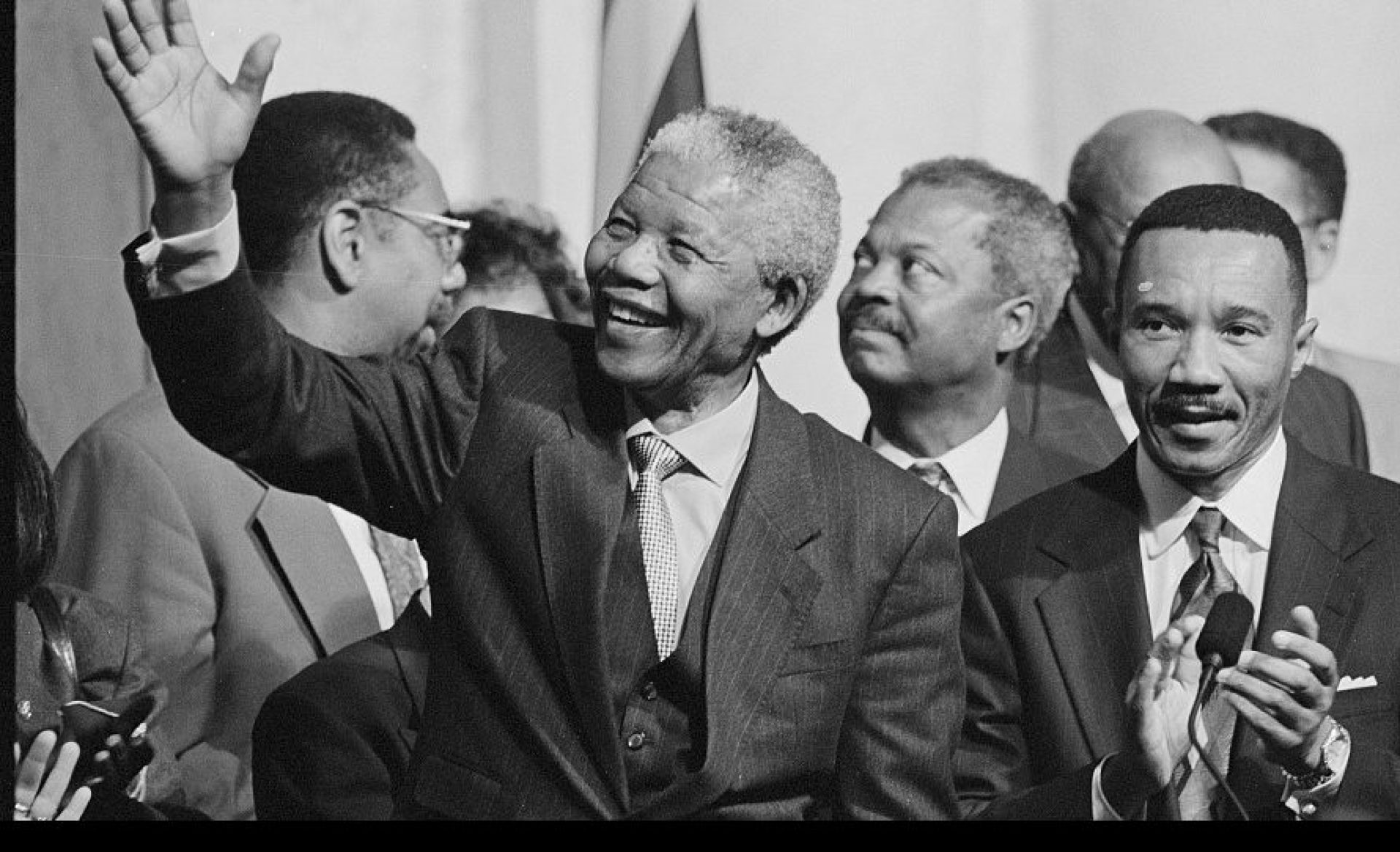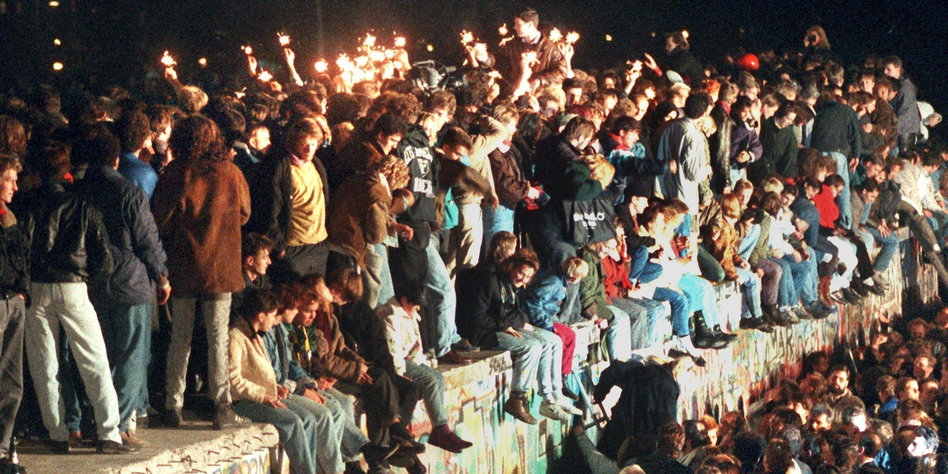With John Lennon and the Plastic Ono Band, it sounded quite simple in their catchy song “Power to the People” back in 1970. But was it really? Let’s first take a look at the 20th century: In which occasions as of the 1960s people demanded their power, their rights and their freedom? And where, in particular, has the political slogan “Power to the People” been an important part of these demands? In the first part of this series, the SCHIRN MAG looks back on five civil rights movements of the last century that chose this slogan as their motto.

1. The Civil Rights Movement
During the late 1950s and 1960s the American Civil Rights Movement was at its peak. The movement aimed to enforce civil rights for African-Americans, who still suffered under legally established racial segregation in the southern states, while in the north, although this had been abolished on paper, racism was still ever-present in daily life. One of the movement’s most prominent figures was Martin Luther King who, together with his supporters, chose civil disobedience as a form of non-violent resistance.
One of the high points was the March on Washington on August 28, 1963, when more than 250,000 people came to the American capital and Martin Luther King gave his legendary “I have a dream…” speech. The Civil Rights Movement made an enormous contribution to reforms establishing equal rights and equality for African-Americans, such as the Civil Rights Act of 1964, which outlawed discrimination on the basis of ethnicity, skin color, religion, gender, or national origin.


2. The Black Panthers and the Black Power Movement
The Black Power Movement formed from the Civil Rights Movement. The American civil rights campaigners Robert F. Williams and Malcolm X wanted more radical action, so moved away from the more reform-oriented, non-violent approach of Martin Luther King. More radical were the Black Panthers (originally the “Black Panther Party for Self-Defense”), founded by Bobby Seale and Huey P. Newton in Oakland, California in 1966. After the murder of Malcolm X in 1965 there was serious unrest in the USA, in which 300 black people were killed by the police and the military.
The Black Panthers set themselves the task of monitoring police violence against African-Americans by setting themselves up as an armed citizens’ militia in the cities, dedicated to the protection of African-Americans. They established a ten-point plan that expressed their ideals and goals, including freedom and self-determination, an end to arbitrary police violence, fair court processes with a black jury and black prosecutors, employment, an end to exploitation and a reformed education system. “Power to the People” was their slogan, too.

The first six members of the Black Panther Party, 1966, Image via: wikimedia.org
.png)
The Black Panthers in London, 1967-1972, Image via: libcom.org
3. People Power Revolution in the Philippines
In February 1986 the People Power Revolution led to the fall of the Philippine dictator Ferdinand Marcos. It was also known as the EDSA revolution, named after Epifanio de los Santos Avenue in Manila, where the biggest demonstrations took place. After the murder of Benigno Aquino, husband of the former president Corazon Aquino, in 1983 and an obviously bogus election in 1986, the opposition groups formed an army, taking control of central points in the capital Manila, including the airport, radio stations and military bases. The Archbishop of Manila called on the people to give the mutinous army shelter and protection in a spirit of peace.
On February 24 around a million people spilled onto the streets of Manila to block the troops loyal to Marcos. An order to fire on the peaceful demonstrators was ignored by officers and soldiers, and the following day they handed over power to the insurgents, who announced a new government and armed forces under the Philippine General Fidel Ramos. On the same day, February 25, 1986, Corazon Aquino and Ferdinand Marcos were sworn in as president in different places, although Marcos fled to Hawaii shortly after. The People Power Revolution had been a peaceful civil protest movement throughout. It caused no deaths, no shots were fired and a 20-year dictatorship came to an end.

EDSA Revolution, Image via: inquirer.net

Corazon Aquino, later president of the Phillipines, Image via wordpress.com
4. Amandla! – Ngawethu! Against Apartheid in South Africa
“Amandla” is a political greeting from the time of the anti-Apartheid movement in South Africa. At meetings it was a ritual for the speaker or chairperson to greet those present with “Amandla,” and they would then respond with “Ngawethu” or “Awethu,” all done with raised fists. The words can be translated like “Power! – To the People!”. This exchange of words is one of three official symbols of the African National Congress (ANC), founded in 1912, along with the black, green and yellow flag that is also the organization’s logo. The ANC sees the words Amandla! – Ngawethu! as the embodiment of the aspirations of the Freedom Charter of 1955, according to which all peoples should rule themselves. Between 1960 and 1990 the ANC’s activities were outlawed in South Africa, but from its exile, the ANC did exert considerable influence on events in South Africa and made a substantial contribution to the democratic change of government in 1994, whereby Nelson Mandela became the country’s first black president.
5. Wir sind das Volk
In Germany too, there was a peaceful revolution in the German Democratic Republic that led to the fall of the SED (the Socialist Union Party), the fall of the Berlin Wall and the reunification of Germany. In 1989 the opposition reorganized against the SED’s regime, which led to a growing willingness to demonstrate. The initial chants of “We are no hooligans,” a reaction to the defamation of the demonstrators, quickly developed into “Wir sind das Volk” – “We are the people.” This was then modified once again into “We are one people” in order to encompass the police and security forces who oversaw the demonstrations.
The government was overtaxed what to do about these events. Even as the mass exodus of East German citizens began (via Eastern Bloc states like Hungary to the West), they were already overburdened. Nevertheless, it became clear to the SED leadership that they needed to set out new travel law. When, on November 9, 1989, it was announced that people were permitted to travel “without any preconditions” across borders into West Germany and to West Berlin “immediately and without delay,” thousands of people promptly made their way to the inner-city border-crossings in order to push ever more loudly for the border to be opened. At 9 p.m. the first border-crossing was opened at Bornholmer Strasse in Berlin. One year later the reunification of Germany was officially celebrated.
The second part of this series will examine “Power to the People” apart from the civil rights movements. John Lennon and his song of precisely that name will of course be featured here, as will American musician James Brown. Also, the next article takes a look at Computer Lib, the first computer magazine, which in 1974 proclaimed “Computer Power to the People! Down with the Cybercrud.”




